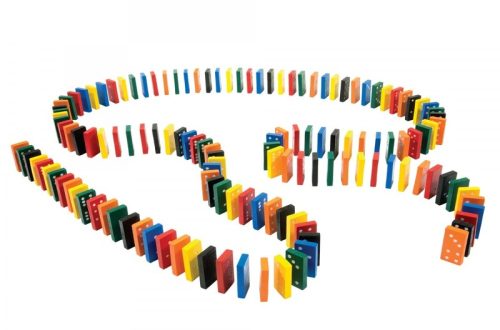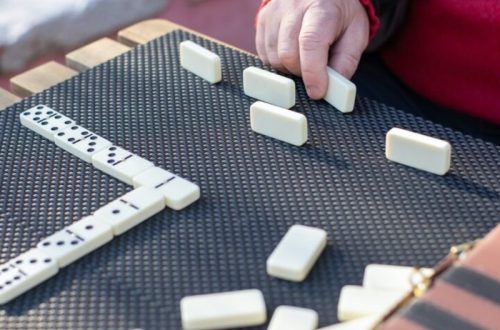Part 1: Importance of Maintenance for RC Toys
Regular maintenance is crucial for ensuring the longevity and optimal performance of your RC toy. By taking care of its components and keeping it in good working condition, you can prolong its lifespan and enhance its overall enjoyment.
Longevity:
One of the primary benefits of regular maintenance is extended lifespan. By addressing issues promptly and preventing them from escalating, you can avoid costly repairs or replacements. This can save you money in the long run and allow you to enjoy your RC toy for many years to come.
Performance:
A well-maintained RC toy will perform better on the track or in the air. Clean, well-lubricated parts and properly adjusted components can make a significant difference in how your RC toy handles and responds to your commands. Regular maintenance can help to improve its speed, agility, and overall control.
Preventative Measures:
To ensure the longevity and performance of your RC toy, there are several preventative measures you can take. These include:
Regular cleaning: Remove dirt, debris, and grime from the exterior and interior of your RC toy.
Lubrication: Apply appropriate lubricants to moving parts to reduce friction and wear.
Inspections: Conduct regular inspections to identify and address any potential issues before they become more serious.
Storage: Store your RC toy in a clean, dry environment to protect it from damage.
By following these guidelines and performing regular maintenance, you can maximize the lifespan and enjoyment of your RC toy.

Part 2: Cleaning and Care
Regular cleaning and care of the electronic components are essential for maintaining the optimal performance and longevity of your RC toy. By following these guidelines, you can prevent damage and ensure that your RC toy continues to provide you with hours of enjoyment.
Regular Cleaning:
Dust, dirt, and grime can accumulate on your RC toy, affecting its performance and appearance. Over time, these contaminants can clog moving parts, reduce efficiency, and even cause damage. To prevent these issues, it is important to clean your RC toy regularly.
- Exterior Cleaning:Use a soft brush or cloth to gently remove dirt and debris from the body, wheels, and other exterior components. Pay particular attention to areas that may have accumulated dirt or grime, such as the underside of the chassis or the crevices around the wheels.
- Interior Cleaning: If your RC toy has removable body panels or access ports, carefully inspect the interior for any accumulated dirt or debris. Use a soft brush or compressed air to clean out any contaminants.
Electronics Care: The electronic components of your RC toy are sensitive and can be easily damaged by water or moisture. It is important to take precautions to protect these parts.
Avoid Water Exposure:
Never expose the electronic components of your RC toy to water or moisture. This can cause short circuits, damage to the circuitry, and other problems.
- Use Compressed Air: To remove dust from the electronic components, use a can of compressed air. Hold the can at a distance and blow away any dust particles. Be careful not to apply excessive pressure, as this can damage sensitive components.
- Handle with Care: When handling the electronic components of your RC toy, be gentle and avoid applying excessive force. This can damage wires, connectors, or other sensitive parts.
Part 3: Lubrication and Greasing
Proper Lubrication is a cornerstone of maintaining a vehicle’s longevity and performance. Ensuring that moving parts have adequate lubrication reduces friction, prevents excessive wear, and helps to maintain the overall efficiency of the vehicle.
Silicone-based Lubricants:
These lubricants are particularly effective for delicate components like door hinges, locks, and window mechanisms. Their non-greasy nature prevents dust and dirt from adhering to the moving parts, ensuring smooth operation and reducing the risk of corrosion.
Regular Inspection:
It’s essential to periodically inspect the lubrication levels in components like gears, bearings, and suspension joints. This can be done during routine maintenance checks or when you notice unusual noises or resistance during operation.
Correct Lubricant Choice:
Using the wrong type of lubricant can lead to damage or premature wear. Always consult your vehicle’s owner’s manual or a qualified mechanic to determine the appropriate lubricant for each component. Grease Application is another critical aspect of vehicle maintenance. Grease provides a protective barrier between moving parts, reducing friction and preventing wear.

Differential and Drive Shafts:
These components are subjected to high loads and temperatures, making proper grease application crucial. The grease acts as a lubricant and a protective coating, preventing corrosion and ensuring smooth operation.
Manufacturer’s Guidelines:
Adhering to the manufacturer’s recommended grease type and application frequency is essential. Over-greasing can lead to excessive heat and damage, while under-greasing can result in premature wear.
Specialized Greases:
For certain components, such as CV joints or wheel bearings, specialized greases may be required. These greases are formulated to withstand specific conditions and provide optimal protection.
By paying attention to proper lubrication and grease application, you can significantly extend the life of your vehicle’s components and ensure its optimal performance. Remember to consult your vehicle’s owner’s manual or a qualified mechanic for specific recommendations and guidelines.
Part 4: Inspection and Maintenance
1. Regular Check-ups: A Proactive Approach
Beyond visual inspections, delve deeper into your RC toy’s maintenance. Check the battery: Ensure it’s fully charged and charging properly. Inspect the motor: Listen for unusual noises that might indicate a problem. Examine the control system: Verify that the transmitter and receiver are functioning correctly. Regular checks can help you pinpoint issues before they escalate into major repairs.
2. Component Replacement: Essential for Longevity
While spare parts are crucial, consider their quality. Invest in genuine or high-quality aftermarket replacements. Using inferior parts can lead to premature failure and additional costs. When replacing components, follow the manufacturer’s instructions carefully. Incorrect installation can cause damage and void warranties.
3. Cleaning and Lubrication: Prevent Wear and Tear
Dirt, dust, and debris can accumulate in your RC toy’s moving parts, causing friction and wear. Regular cleaning is essential. Use a soft brush or compressed air to remove dirt from the exterior and interior components. Lubrication is also vital. Apply a thin layer of appropriate lubricant to moving parts like gears and bearings. Excessive lubrication can attract dirt, so use it sparingly.
4. Storage: Protect Your Investment
Proper storage can extend your RC toy’s lifespan. Store it in a cool, dry place away from direct sunlight and excessive heat. Avoid storing it with batteries installed, as they can discharge over time. If you’re storing the toy for an extended period, consider removing the batteries and storing them separately.

5. Professional Maintenance: When in Doubt
While DIY maintenance can be rewarding, some issues may require professional expertise. If you’re unsure about a particular repair or encounter a complex problem, don’t hesitate to consult a qualified technician. They have the tools and knowledge to diagnose and fix issues efficiently.
By following these maintenance tips, you can ensure that your RC toy remains in top condition for years to come. Regular check-ups, component replacement, cleaning, lubrication, and proper storage will help you enjoy countless hours of fun and excitement.
Part 5: Battery Care and Handling
1. Proper Charging:
Follow the manufacturer’s guidelines for charging your RC toy’s batteries. Overcharging or undercharging can lead to reduced battery life and potential safety hazards.
2. Storage:
When the RC toy is not in use, it’s important to store the batteries in a cool, dry place. Avoid leaving them in extreme temperatures or direct sunlight, as this can negatively affect their performance.
Part 6: Professional Maintenance
1. Servicing:
If you are unsure about how to perform certain maintenance tasks, or if your RC toy requires more extensive repairs, consider taking it to a professional hobby shop. The technicians there can provide comprehensive servicing and repairs to keep your RC toy in top condition.
2. Upgrades:
A professional technician can also help you with upgrading your RC toy with new components or performance parts. Whether it’s a new motor, ESC, or suspension system, they can guide you through the process of enhancing your RC toy’s performance.
In conclusion, proper maintenance is essential for the optimal performance and longevity of your RC toy. By following these tips and tricks, you can ensure that your RC toy remains in top condition, providing you with endless hours of enjoyment. Regular cleaning, lubrication, inspection, battery care, and professional servicing are all key components of an effective maintenance routine for your RC toy.


